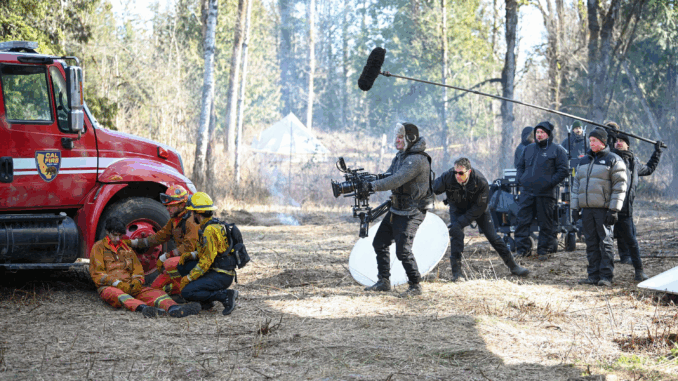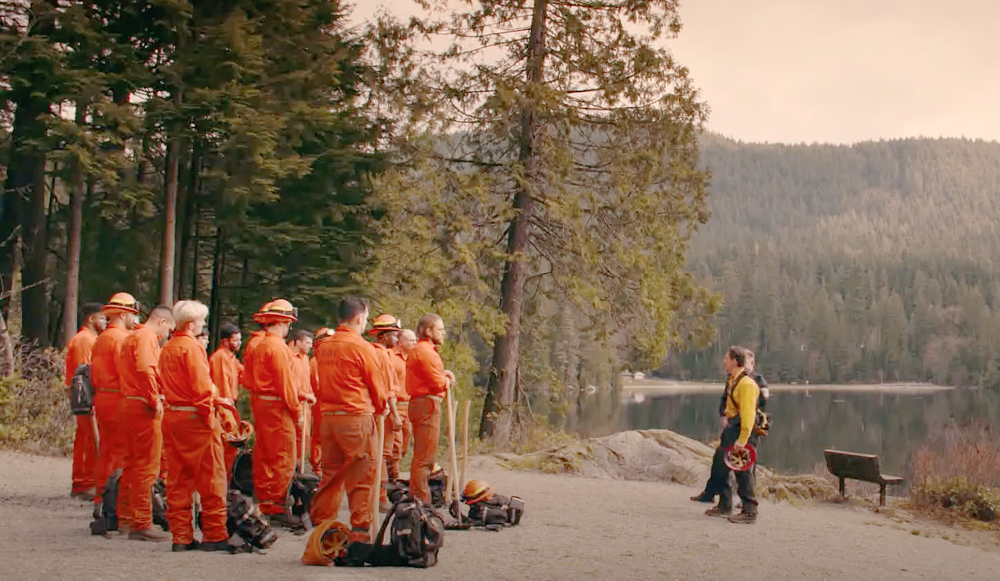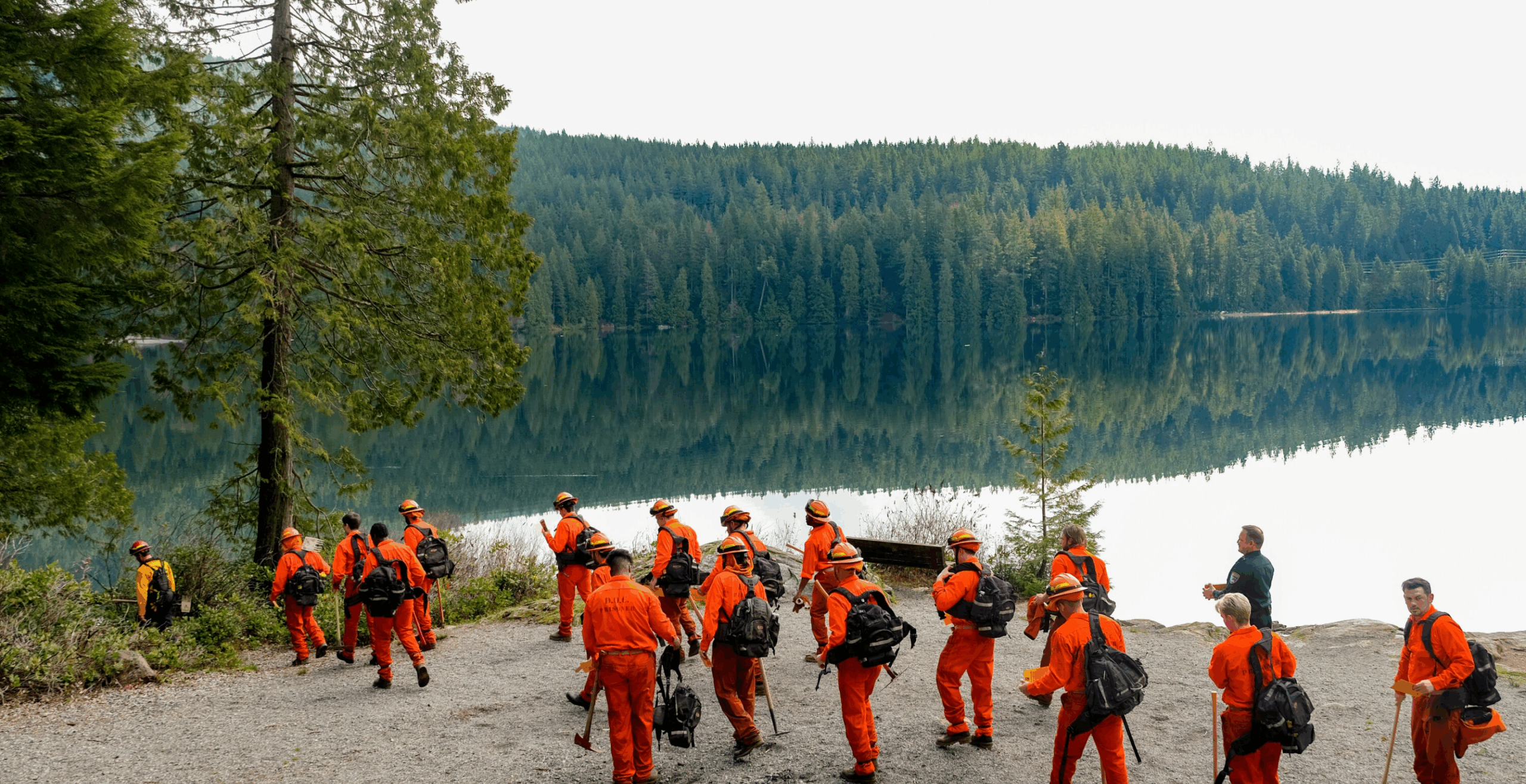
Ever wondered where the intense fire rescues, heart-wrenching reunions, and small-town charm of Fire Country are actually filmed? You’re not alone. While the show takes place in Northern California, the truth might surprise you — it’s mostly shot miles away from the Golden State.
The show’s creators worked tirelessly to bring authentic California energy to every frame, even though many of its breathtaking backdrops are found in British Columbia, Canada. From secret forest fire locations to hidden small-town streets transformed for TV, here’s your inside look at the real-world magic behind Fire Country.
1. The Hidden Heart of Fire Country: Vancouver, British Columbia
Most of Fire Country’s scenes come to life around Vancouver, a filming hotspot known for doubling as almost anywhere in the world. The city offers rugged terrain, lush greenery, and mountains that perfectly mimic California’s fire zones.
Production designer Troy Gilchrist revealed:
“We wanted viewers to feel like they were in NorCal — the danger, the dryness, the beauty. Vancouver gave us that canvas.”
2. Mission, B.C. — The True Home of “Edgewater”
Remember the small town of Edgewater where Bode and his crew return for redemption? It’s actually filmed in Mission, British Columbia.
Mission’s cozy downtown streets, old diners, and rustic fire station facades were transformed to create the believable small-town setting. The crew even changed local signage and storefronts for authenticity, leaving locals doing double takes while grabbing their morning coffee!
3. The Pitt — Built from Scratch in the Woods
The iconic inmate firefighter camp, “The Pitt,” isn’t a real prison or CAL FIRE facility. It was custom-built deep in the Canadian wilderness, surrounded by dense forest and dirt roads to mirror the look of a California fire camp.
Max Thieriot, who plays Bode Donovan, explained:
“We wanted The Pitt to feel gritty and lived-in — like a place where redemption is fought for every day.”
Every log, trailer, and burn mark was meticulously designed to reflect both hardship and hope.
4. Filming Near Fraser Valley’s Wildfire-Prone Terrain
Several outdoor fire sequences were filmed near Fraser Valley, a region notorious for its unpredictable weather and vast forests. It allowed the production team to simulate large-scale wildfires using controlled burns, smoke machines, and digital fire enhancements.
The result? Jaw-dropping realism without putting anyone at real risk.
5. The Real Firefighters Behind the Scenes
To maintain authenticity, the show hired consultants from CAL FIRE and Canadian firefighting experts. Many firefighting extras you see on screen are real firefighters lending their experience to make the show as true-to-life as possible.
Their insights shaped everything — from how the cast holds hoses to how they react emotionally during rescues.
6. Why the Crew Chose Canada Over California
You might ask — if the show’s set in California, why film in Canada?
Simple answer: cost and control.
Vancouver offers generous tax credits and consistent weather, making it easier to shoot for long periods without wild environmental changes. The landscapes look almost identical to Northern California — minus the real danger of active wildfires.

7. The Secret River Scene — Filmed at Stave Lake
That emotional riverside rescue scene in Season 2? It was shot at Stave Lake, near Mission, B.C. The area’s rugged terrain and crystal-clear waters made it ideal for a cinematic firefighting backdrop.
Cameras had to be ferried in by boat, and the crew spent hours wading through mud just to capture one perfect take.
8. The Iconic Bridge Scene — Hidden in Plain Sight
In one dramatic episode, Bode stands on a bridge overlooking his past mistakes — a symbolic scene for fans. That bridge isn’t in California at all. It’s located in Maple Ridge, a picturesque city east of Vancouver known for its wooden bridges and cinematic views.
It’s a local favorite among Riverdale and Supernatural fans, too!
9. The Fire Station — A Clever Set Hybrid
The Edgewater Fire Station might look like a real operational building, but it’s actually a set hybrid combining a real fire hall exterior in Langley with indoor studio sets built in Burnaby.
The production team recreated every bolt, extinguisher, and smoke alarm to match real CAL FIRE stations. They even brought in California equipment to boost realism.
10. The Town Hall and Café — Community Transformed
Several of Edgewater’s town scenes — like the café where Bode and Gabriela reconnect — were filmed at local shops in Mission that were temporarily converted into TV-ready sets.
Local residents often spot their favorite diners or gas stations in the background and can’t believe how Hollywood transformed their streets overnight.
11. The Church and Memorial Scenes
One of the show’s most emotional scenes — the firefighter memorial — was filmed at a real church in Mission. Locals were invited as extras, making it an incredibly heartfelt experience for the community.
Director James Strong said:
“It wasn’t just acting that day — it was everyone paying respect to real heroes.”
12. The Mountains That Never Were — CGI Magic
Some sweeping wildfire scenes appear to show vast California mountain ranges. Surprisingly, many of those landscapes are digitally enhanced using CGI layering over real shots taken in British Columbia.
The digital effects team added dry hillsides, smoke plumes, and heat waves to create the illusion of a California summer blaze.
13. Cast Reactions to Filming in the Cold
Ironically, while Fire Country depicts blazing heat, filming often took place in freezing Canadian temperatures.
Diane Farr (Sharon Leone) laughed about filming “wildfire” scenes in near-zero weather:
“We’d be shivering between takes while pretending to sweat from the heat!”
14. The Local Impact — How Fire Country Boosted Mission’s Economy
The series brought a wave of excitement (and tourism) to Mission. Cafés, hotels, and small businesses thrived as fans and production crews flooded the town. Locals even reported visitors trying to find “The Pitt” in real life!
15. Fans’ Favorite Hidden Easter Eggs
Look closely during certain town shots — you’ll spot clever Easter eggs:
-
Street names referencing real CAL FIRE stations.
-
A mural of a phoenix rising from ashes — symbolizing redemption.
-
“Edgewater” license plates reused from early episodes.
These subtle touches show how much love and detail went into world-building.
16. The Cinematography That Sets Fire Country Apart
Unlike many TV dramas, Fire Country uses natural lighting and wide, cinematic camera angles. This gives it a raw, documentary-style feel — perfect for a story rooted in real danger and redemption.
Director of Photography, Michael Storey, shared:
“We want viewers to feel the heat — not just see it. The environment is a character, too.”
17. A Tribute to Real Heroes
Every filming location serves a bigger purpose — honoring the bravery of real firefighters. The cast frequently visits fire departments in both the U.S. and Canada to thank first responders who risk their lives every day.
18. What Fans Can Expect in Future Seasons
As Fire Country continues to grow, expect even more breathtaking locations. Rumors hint at new settings — possibly urban fire rescues and mountain wildfires — filmed in areas around Squamish and Whistler.
19. The Secret Ingredient — Authentic Humanity
Behind the flames, smoke, and cinematic tricks lies a deeper truth: Fire Country feels real because it is real — built from human emotion, community spirit, and the landscapes that reflect it.
Each hidden filming location isn’t just a backdrop — it’s part of the soul of the story.
Now you know — Fire Country isn’t just filmed in one place. It’s a beautiful blend of real-world grit and Hollywood creativity, woven together to tell a story that feels authentic from start to finish.
Next time you watch a blazing rescue or a quiet emotional moment, remember — behind every scene is a hidden world of real forests, hardworking locals, and a crew dedicated to keeping the flame of authenticity alive.

